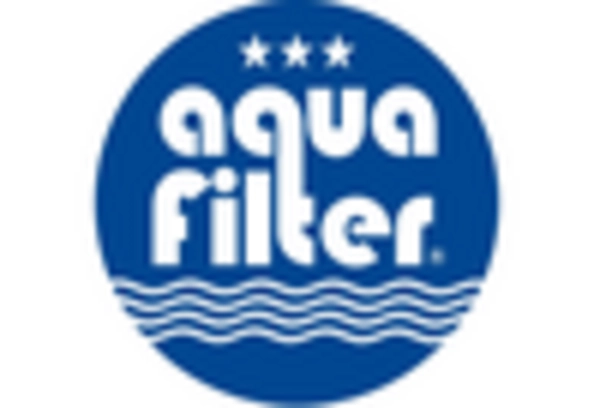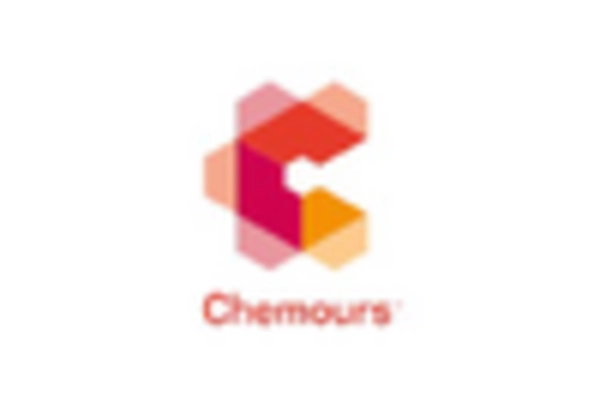Technological Advancements
Innovations in filtration technologies are significantly influencing the PFAS Filtration Market. Advanced materials and methods, such as activated carbon, ion exchange resins, and membrane filtration, are being developed to enhance the removal efficiency of PFAS compounds. Recent studies indicate that certain filtration systems can achieve over 99% removal rates for specific PFAS types. This technological evolution not only improves the effectiveness of existing systems but also reduces operational costs, making them more accessible to a broader range of users. As these technologies continue to advance, the market is expected to expand, catering to diverse applications from municipal water treatment to industrial processes.
Public Awareness and Demand
Increasing public awareness regarding the health risks associated with PFAS contamination is driving demand within the PFAS Filtration Market. As consumers become more informed about the potential dangers of PFAS in drinking water and food supplies, they are advocating for cleaner alternatives. This shift in consumer behavior is prompting businesses and municipalities to prioritize the implementation of effective filtration solutions. Market data suggests that the demand for PFAS filtration systems has surged, with a notable increase in inquiries and installations across residential and commercial sectors. This trend indicates a growing recognition of the importance of safe drinking water, further propelling market growth.
Regulatory Pressure and Compliance
The PFAS Filtration Market is experiencing heightened regulatory scrutiny as governments worldwide implement stricter guidelines regarding per- and polyfluoroalkyl substances (PFAS). This regulatory pressure is compelling industries to adopt advanced filtration technologies to meet compliance standards. For instance, the U.S. Environmental Protection Agency has established health advisories for PFAS levels in drinking water, prompting municipalities and industries to invest in filtration solutions. The market is projected to grow as organizations seek to avoid penalties and ensure public safety. As regulations evolve, the demand for effective PFAS filtration systems is likely to increase, driving innovation and investment in this sector.
Investment and Funding Opportunities
Investment in the PFAS Filtration Market is on the rise as both public and private sectors recognize the urgent need for effective solutions to combat PFAS contamination. Government grants and funding initiatives aimed at water quality improvement are encouraging research and development in filtration technologies. Additionally, venture capital is increasingly flowing into startups focused on innovative PFAS removal methods. This influx of capital is likely to accelerate advancements in filtration technologies, making them more efficient and cost-effective. As funding opportunities expand, the market is expected to grow, fostering a competitive landscape that drives further innovation and adoption of PFAS filtration systems.
Environmental Concerns and Sustainability
The PFAS Filtration Market is also being shaped by rising environmental concerns and the push for sustainable practices. As awareness of PFAS's environmental persistence and bioaccumulation grows, stakeholders are increasingly focused on finding solutions to mitigate these impacts. Filtration technologies that effectively remove PFAS from water sources are becoming essential in efforts to protect ecosystems and public health. The market is likely to see a rise in demand for sustainable filtration options that not only address PFAS contamination but also align with broader environmental goals. This trend may lead to the development of innovative, eco-friendly filtration solutions that cater to environmentally conscious consumers.


















Leave a Comment